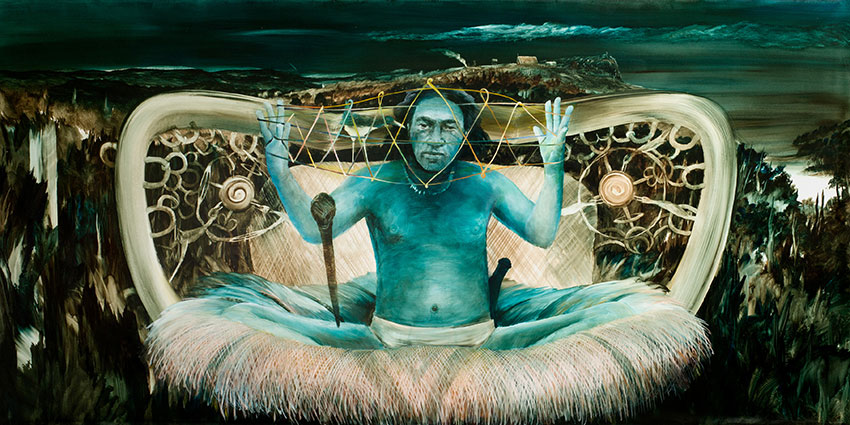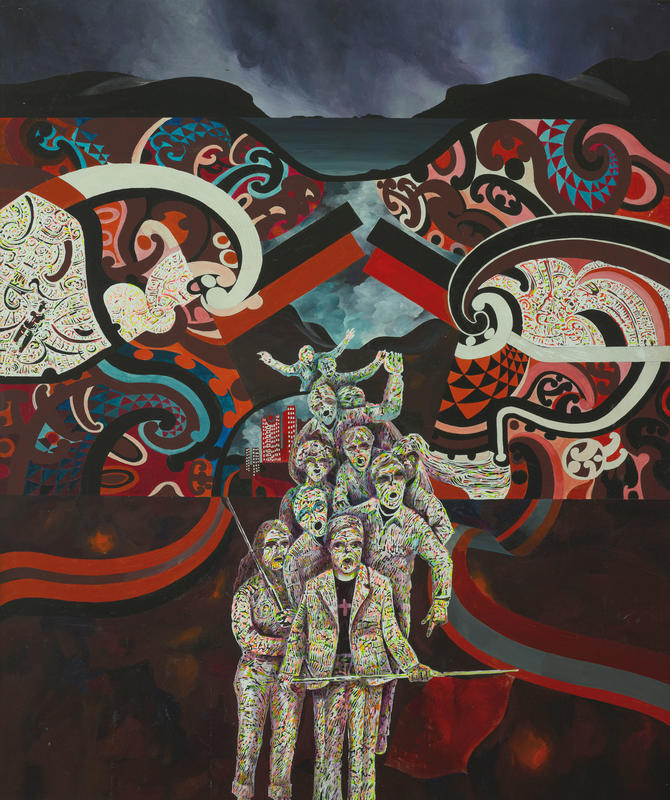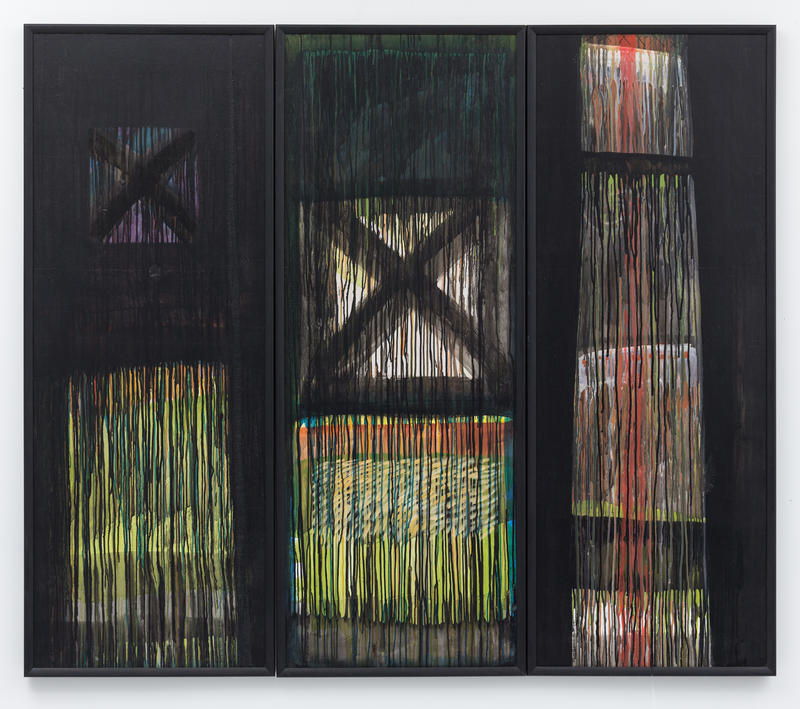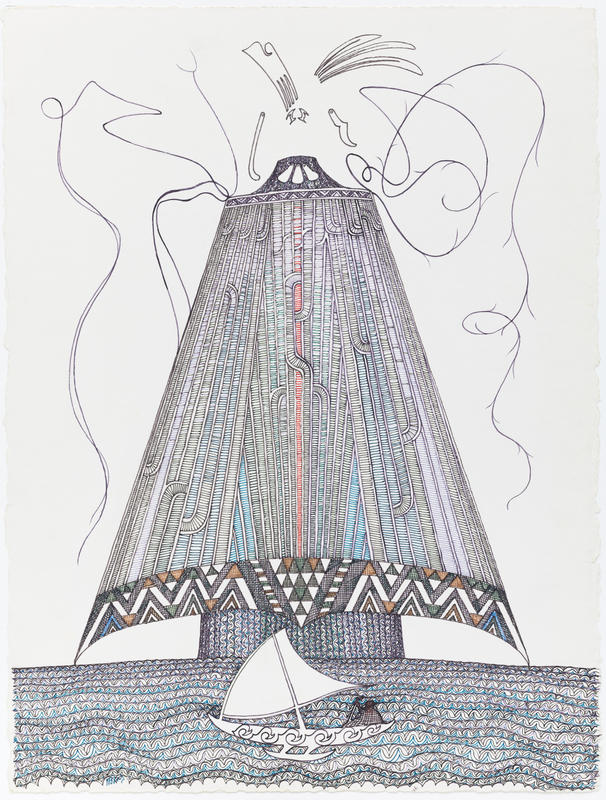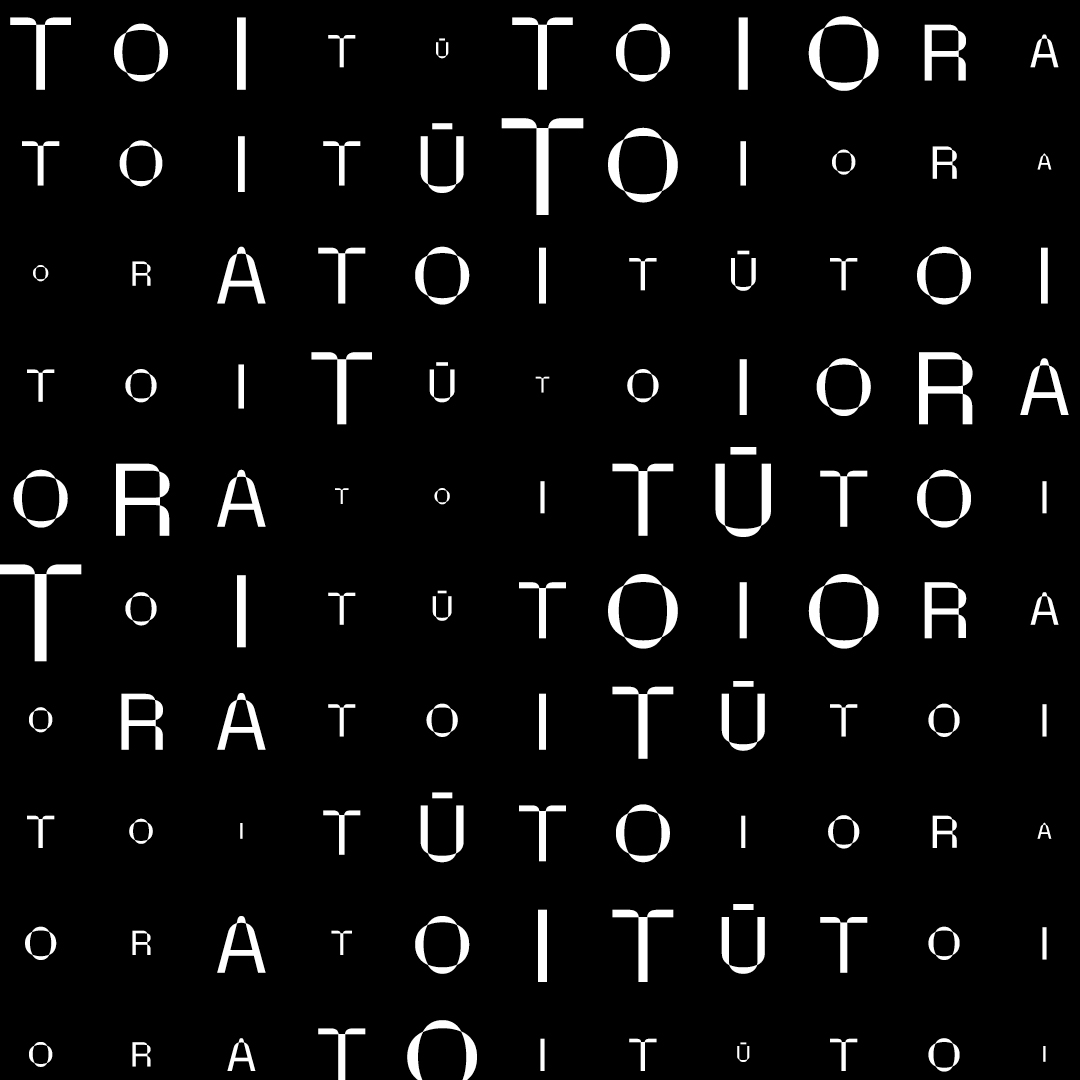The demi-god Māui is celebrated in Māori culture as the ultimate provocateur, perhaps most renowned for attempting to obtain immortality for humankind. Artists are very much like Māui – they are innovators and tricksters, creating work that provokes response. They offer prophetic statements loaded with philosophical teachings and dwell upon the fallible and mortal nature of our existence. In doing so they identify what separates our realm – Ira Tangata – from that of the gods – Ira Atua.
The dramatic change and adversity of the early 19th-century European settlement of Aotearoa New Zealand gave rise to Māori prophets and religious movements that uniquely combined Māori philosophy with that of newly introduced Christianity. It also brought about the Treaty of Waitangi, first signed by representatives of the British Crown and some 540 Māori rangatira (chiefs). A fundamental difference in understanding about the Treaty resulted from the deceptive mistranslation of crucial concepts, however: Māori did not believe that they were ceding authority, and have since insisted that the terms of the Treaty as conveyed in the te reo Māori version be upheld. This call found real momentum in the 1970s: Māori voices were heard at the sites of power, demanding leadership roles in the country’s development.
As Māori creation narratives attest, there has always been a place for the provocative individual within the collective. This truth is evident in Māui’s story. The art of the 1990s was born of significant social, political and cultural change. A diverse mix of artists created work informed by whakapapa (genealogical connection) but expressed with individuality, rather than solely within a culture of collective identity. Many artists also emerged from a collective art practice, such as in the realm of film, and their work is strongly associated with Māori concepts of whakapapa and oral language.
E whakanuia ana a Māui te tipua e te ahurea Māori hei kaiwhakapātari taioreore, ākene pea ko tāna mahi rongonui katoa ko te whakamātau i te rironga mai o te oranga tonutanga mō te tangata. He rite tonu ngā ringa toi ki a Māui - he hunga auaha, he hīanga hoki, he waihanga toi e whakaara ana i te urupare. Ka tuku i ētahi whakapuakitanga poropiti e utaina ana ki ngā akoranga hinengaro, ā, e mau ana ngā kōrero mō te āhua pōhēhē me te ao matemate o tō tātou tauoranga. Nā tēnei, e tautuhi ana rātou i te mea e wehe ana i tō tātou ao - Te Ira Tangata - mai i tō ngā atua - Te Ira Atua.
Nā te hurirapatanga me te whakararutanga o te taetaenga mai o Tauiwi i ngā tīmatanga o te rautau 19 ki Aotearoa, ka ara mai ai ngā poropiti Māori me ngā kaupapa whakapono, i ahurei ai te whakakotahi i te whakaaro Māori ki tō te whakaaro Karaitiana hou. Nāna hoki i mau mai Te Tiriti o Waitangi, i waitohua tuatahitia e ngā māngai o te Karauna me ētahi rangatira Māori 540. I hua ake tētahi rerekētanga whakapū o te māramatanga mō te Tiriti nā te māminga o te whakamāoritanga i ngā tino kaupapa, engari: kāore te Māori e whakapono ake i tukuna tōna tino rangatiratanga, ā, e tohe tonu ana kia hāpaitia ngā take o te Tiriti i amohia i roto i te reo Māori. Ka kaha te kōkiritia o tēnei take i ngā tau o te 1970: ka tīmata te rongo i ngā reo Māori i ngā wāhi whai mana, he reo e whakahau ana i ngā tūranga hautū i te whakahaeretanga o te motu.
E ai ki ngā kōrero Māori mō te orokohanga o te ao, he tūranga tūturu mā te kaiwhakapātari i roto tonu i te rōpū. E mārakerake ana te kite i tēnei i roto i ngā kōrero mō Māui. I hua ake ngā toi o ngā tau 1990 i ngā panonitanga ā-pāpori, ā-tōrangapū, ā-ahurea nui hoki. I waihangatia e tētahi reanga ringa toi kanorau ngā taonga toi i whiwhi mōhio i te whakapapa, heoi anō ko te whakapuaki i te toi he āhuatanga takitahi, ehara i te mahi nō roto i te tuakiri o te ahurea o te rōpū. He nui ngā ringa toi i maea mai i te mahi toi ā-rōpū, pērā i te ao kiriata, ā, ko ā rātou mahi e hāngai pū ana ki ngā tikanga whakaaro a te Māori, arā te whakapapa me te reo ā-waha.
